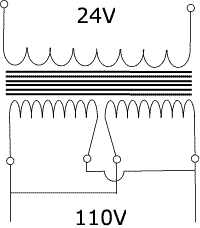I found the picture below on the Internet about a double primary winding transformer. I understand how a simple primary double secondary winding transformer works, but I don't see the point in making a transformer like the one found below (output is at the bottom of the picture, input at the top of it).
Is it the same thing when you put two voltage sources in parallel so you can get twice the current at the output (so you get twice the power)?

